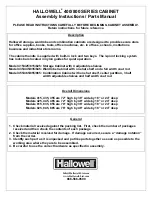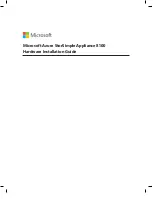
CHAPTER 4: Thermal Specifications
Library Bezel
This section lists empirical temperature data from measurements taken while using
the library bezel.
Again, the results show similar components running hotter in 320 mode than 220
mode. The HiFN (compression chip) is slightly hotter and the Hydra chips (read
channels) also run hotter. Overall, the drive running in 220 mode parallels the
drive’s performance when running in 320 mode for both the embedded and library
bezels. For both bezel types, there is little to no difference in the tape path
temperatures.
Table 4-4.
SDLT 320 versus SDLT 220 with Library Bezel, Compression On (2:1)
25 degrees C Ambient
40 degrees C Ambient
Sensor
SDLT
320*
SDLT
220
‡
∆
SDLT
320*
SDLT
220
‡
∆
1
HiFN
52.1
48.6
3.5
66.5
63.8
2.7
2
Hydra 1
54.1
50.6
3.5
68.5
66.1
2.4
3
Hydra 2
51.2
48.4
2.8
65.8
63.7
2.1
4
Coldfire
35.8
35.7
0.1
50.8
50.8
0.0
5
3.3-5.0 V Reg
44.1
42.6
1.5
59.0
57.8
1.2
6
Front Sensor
29.0
29.0
0.0
44.0
44.0
0.0
7
Rear Sensor
44.0
42.5
1.5
59.0
57.9
1.1
8
Headboard
46.4
46.3
0.1
60.2
60.8
-0.6
9
Qlogic
40.3
39.5
0.8
55.4
54.8
0.6
10
Media Sensor
(Heads)
34.5
34.5
0.0
49.3
49.4
-0.1
* These temperatures measured on SDLT 320 drives.
‡ These temperatures measured on SDLT 320 drives running in 220 read/write mode.
Summary of Contents for SDLT220-320 INTEGRATION
Page 1: ...TANDBERG Super DLTTM Design Intergration Guide Revision 1 June 2002 432588 01...
Page 4: ...SDLT 220 and SDLT 320 Design Integration Guide...
Page 18: ...CHAPTER 1 Introduction...
Page 24: ...CHAPTER 2 General Drive Specifications Figure 2 6 Front Views of SDLT 220 320 Tape Drive...
Page 53: ...CHAPTER 4 Thermal Specifications Figure 4 3 HIM Board Thermal Measurement Location Qlogic...
Page 80: ...CHAPTER 6 SCSI and Controller Interface Specification...
Page 86: ...CHAPTER 7 Updating the Firmware...
Page 93: ......
















































